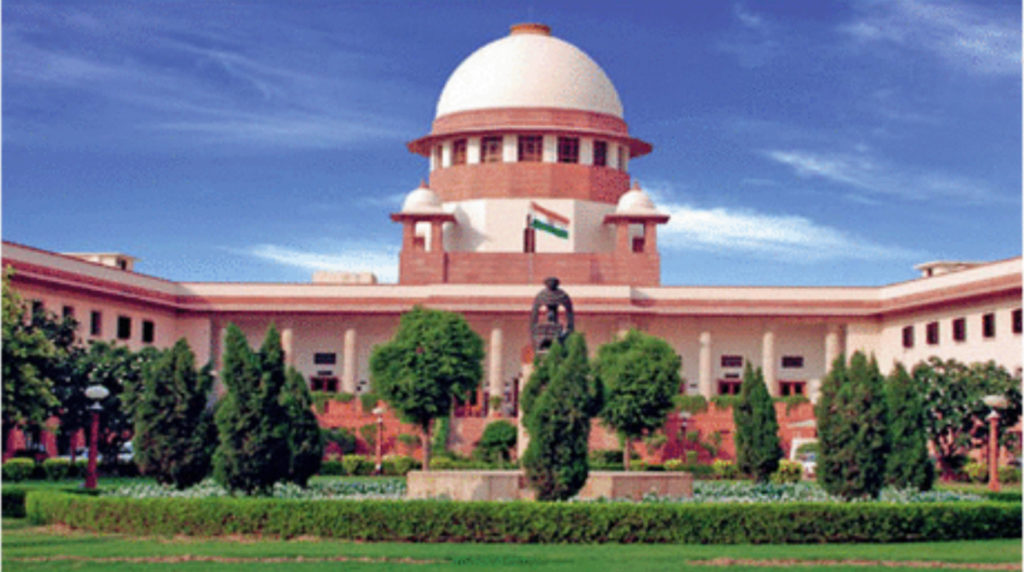Is there diversity in Indian Judiciary?

[orc]Data shared by the government in the Lok Sabha indicates that merely 10.4% of the judges of the Supreme Court and various High Courts are Women.
The Ministry of Law and Justice recently released information about gender diversity in the Supreme Court and the High Courts. The data highlights the gender disparity in the Indian judiciary and makes the case for a more representative Indian judiciary.
Only 10.4% Women Judges in High Courts & the Supreme Court
Of the 676 judges serving in the Indian judiciary, only 70 are women. The Supreme Court has only one-woman judge and eight High Courts comprise all-male judiciaries. With 12 women on the bench, Bombay High Court has the highest number of women judges in the country.
| Working Strength | Number of Female Judges | Number of Male Judges | % of Female Judges | |
|---|---|---|---|---|
| Supreme Court | 24 | 1 | 23 | 4.2 |
| Allahabad High Court | 85 | 7 | 78 | 8.2 |
| High Court of Judicature at Hyderabad | 23 | 1 | 22 | 4.3 |
| Bombay High Court | 62 | 12 | 50 | 19.4 |
| Calcutta High Court | 38 | 3 | 35 | 7.9 |
| Chhattisgarh High Court | 11 | – | 11 | 0 |
| Delhi High Court | 39 | 11 | 28 | 28.2 |
| Guwahati High Court | 17 | 1 | 16 | 5.9 |
| Gujarat High Court | 31 | 4 | 27 | 12.9 |
| Himachal Pradesh | 10 | – | 10 | 0 |
| Jammu & Kashmir High Court | 10 | – | 10 | 0 |
| Jharkhand High Court | 13 | – | 13 | 0 |
| Karnataka High Court | 30 | 4 | 26 | 13.3 |
| Kerala High Court | 38 | 4 | 34 | 10.5 |
| Madhya Pradesh High Court | 39 | 3 | 36 | 7.7 |
| Madras High Court | 57 | 6 | 51 | 10.5 |
| Manipur High Court | 3 | – | 3 | 0 |
| Meghalaya High Court | 3 | – | 3 | 0 |
| Odisha High Court | 18 | 1 | 17 | 5.6 |
| Patna High Court | 32 | 2 | 30 | 6.3 |
| Punjab & Haryana High Court | 47 | 7 | 40 | 14.9 |
| Rajasthan High Court | 34 | 2 | 32 | 5.9 |
| Sikkim High Court | 2 | 1 | 1 | 50 |
| Tripura High Court | 3 | – | 3 | 0 |
| Uttarakhand High Court | 7 | – | 7 | 0 |
| Total | 676 | 70 | 606 | 10.4 |
Only eight (8) High Courts have a greater percentage of female judges compared to the national average. Sikkim has one female judge out of the working strength of two. Delhi High Court has 28.2% or 11 female judges. Only Bombay & Delhi High Courts have female judges in double digit. Four (4) high courts and the Supreme Court have only one female judge.
There is no data to illuminate the caste, class or religious composition of the judiciary. However, the homogeneity of the Indian judiciary is widely known.
Why diversity in the judiciary matters?
The role of the judiciary is to make decisions in accordance with the letter of the law. While the law formulates general regulations, legislations allow enough discretion to the judiciary to exercise their independent reasoning and provide justice to the unique factual circumstances in individual cases. It is in exercising this discretion that judges draw from their own worldview and personal experiences.
A monolithic, homogenous worldview of the judiciary would not adequately be able to do justice to our pluralistic society where each citizen occupies a different political position in the hierarchies of gender, caste, religion, region, class, culture, ability and sexuality.
For instance, the low rates of conviction for crimes committed against members of the Scheduled Caste and Scheduled Tribe communities is considerably due to the privilege of the largely upper-caste judiciary which does not understand the routine violence and systemic oppression meted out to lower caste communities. Research also reveals that marginalised socio-economic sections in society are more disparately impacted by death penalty convictions.
The issue of the composition of judiciaries not adequately representing all sections of the population is common across countries. However, judiciaries are now being urged to address this issue. In the US and UK, calls for gender diversity in the bench have gained traction and the systemic discrimination to exclude women from the bench has been revealed.
The Indian judiciary must possess a diversity of worldviews that matches its legal expertise to ensure justice. This necessarily requires the composition of the judiciary to adequately represent the different sections of the Indian society. The lack of diversity impacts the judgments given by the court and these judgments have an impact on our society. Courts can free people from stereotypes and oppression or unwittingly assist in perpetuating them due to the lack of perspective on worldviews.
What is the current status?
In fact, the National Commission for Scheduled Castes (NCSC) in its 2011 report recommended the constitution of a National Judicial Commission for making appointment to the Superior Courts and that the Judicial Commission must follow a minimum reservation for various groups. The Government in its reply to a question in the Lok Sabha stated that it has requested the Chief Justices of the High Courts to give consideration to suitable candidates belonging to Scheduled Castes, Scheduled Tribes, Other Backward Classes, Minorities and women while sending proposals for appointment of Judges. Despite these recommendations, there is no considerable progress.
Featured Image: Supreme Court of India